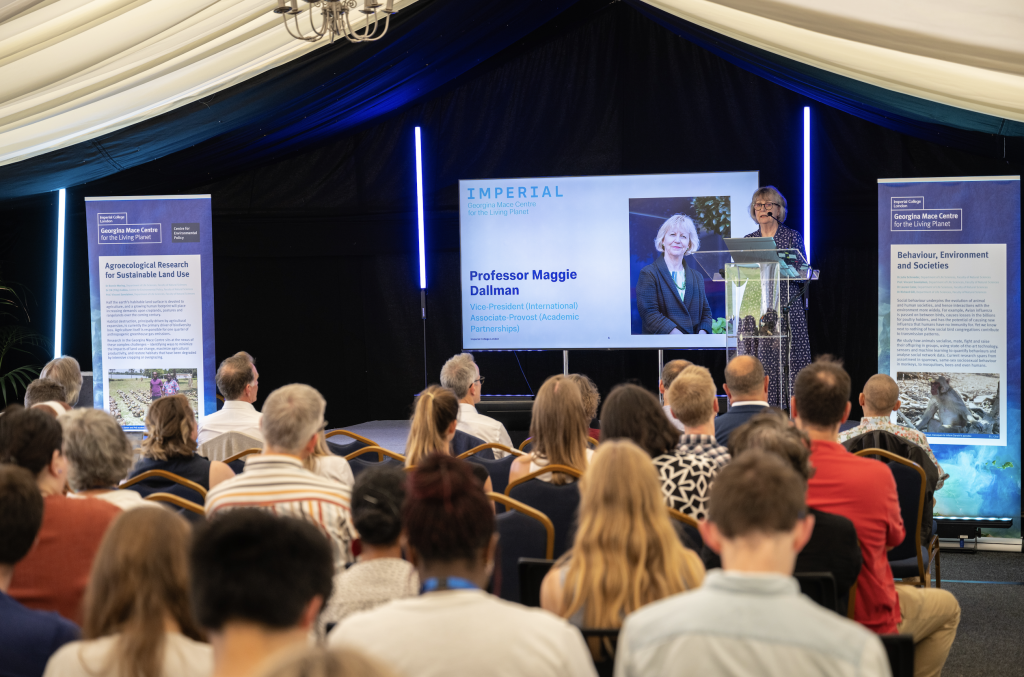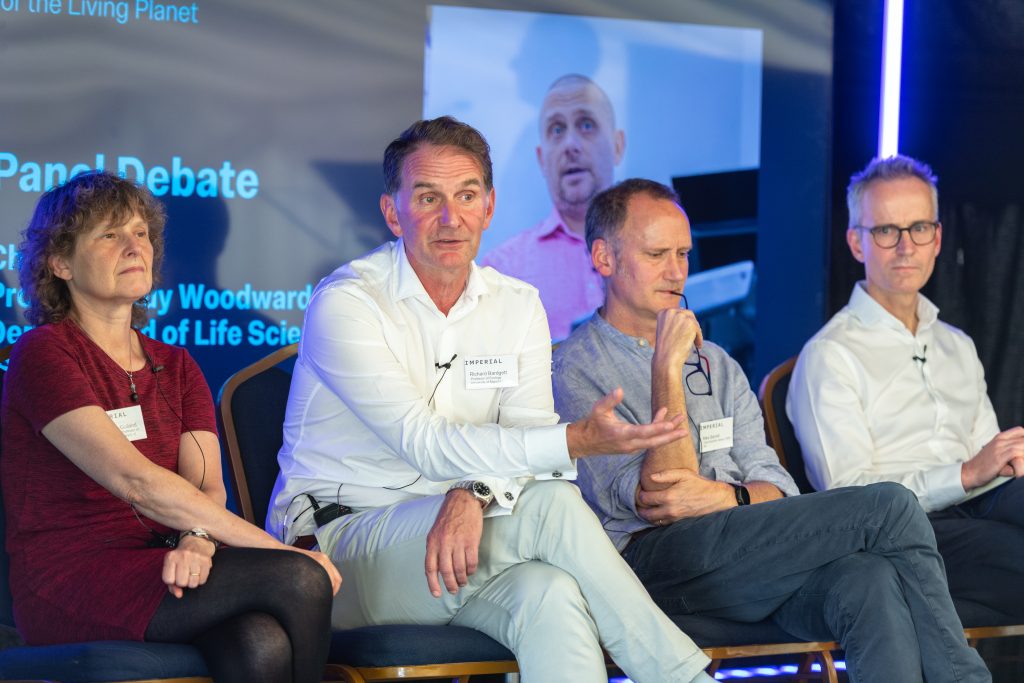The Georgina Mace Centre (GMC) Living Planet Debate recently brought together leading biodiversity experts and policymakers to discuss just how effective international treaties and targets actually were in communicating the current global biodiversity crises.
Are goals like ’30 by 30’ – the global commitment to designate 30% of Earth’s land and ocean area as protected areas by 2030 – useful in conveying the urgency of conservation efforts and capturing the science underpinning biodiversity?

Here are our five takeaways from this year’s GMC debate, which is now available to watch on Youtube.
-
Conserving biodiversity needs to be higher on the political agenda
Director of the GMC, Professor Vincent Savolainen, emphasised the importance of getting biodiversity higher on political agendas. Highlighting the Centre’s interdisciplinary approach, he underscored the urgent need for robust biodiversity policies, especially with a new UK government and the upcoming COP20 conference.
All speakers highlighted the global steep decline in biodiversity. Indexes such as the Living Planet Index – a measure of biological diversity in terrestrial, freshwater and marine habitats – reports an average 69% decline across monitored animal populations from 1970.
Professor Savolainen was one of over 180 UK scientists to sign a recent letter, calling on all political parties to prioritise the conservation of biodiversity.
-
We don’t just need top-level taglines
Professor Eleanor Jane Milner-Gullard, Professor of Biodiveristy at the University of Oxford, analysed the Global Biodiversity Framework (GBF) finalised in December 2022. This ambitious framework aims to halt and reverse biodiversity loss by 2030 – known as the ’30 by 30’ goal.
“We, as biodiversity scientists, have something to aim towards, and something concrete,” she said.
However, though “tagline” targets are necessary in creating momentum for conservation, Professor Milner-Gullard warned that they were not, by themselves, sufficient. Conservation policies must also ensure that protected areas are ecologically representative, effectively conserved, equitably governed and integrated into wider landscapes. Policies must also respect the rights of indigenous people.
To have effective conservation, Professor Milner-Gullard highlighted the importance of tackling the root causes behind biodiversity loss, including global supply chains and financial flows.
-
Biodiversity can be invisible
Professor Richard Bardgett, Professor of Ecology at the University of Manchester, highlighted a less visible but equally crucial aspect of biodiversity: soil. Soil hosts a vast majority of Earth’s biodiversity, yet it often remains overlooked in conservation policies. Bardgett argued for the integration of soil biodiversity into international treaties, emphasising its vital role in ecosystem functions such as nutrient cycling and carbon stabilisation.

Though there has been significant progress in integrating monitoring data on biodiversity in policy, more still needs to be done to develop standardised monitoring and land management practices to protect the “unseen majority” of bacteria, fungi and other lifeforms in soil.
“If you exclude this soil biodiversity from these targets, the actual policies could fail to represent the majority of diversity on Earth, and also the critical functions that these organisms actually perform,” Professor Bardgett said.
-
There needs to be a greater focus on reversing biodiversity loss
Dr Mike Barnett, Chief Scientific Adviser at the World Wide Fund for Nature in the UK, stated that goals that focused solely on slowing biodiversity loss were not ambitious enough. Instead, policymakers should aim to “bend the curve”, where biodiversity loss is not just stopped but also reversed.
Dr Barnett’s team was able to model ambitious scenarios in which biodiversity loss could be reversed while still feeding a growing global human population.
Doing so would require current unsustainable practices in the global supply chains to be addressed, such as soy production in the Amazon. Scientists working in biodiversity, concerned with local or regional land use, would need to be better integrated with discussions surrounding global climate policy, he said.
-
How to communicate biodiversity as scientists
Professor Gideon Henderson, Chief Scientific Adviser at the Department of Environment, Food and Rural Affairs, tackled the challenge of communicating why biodiversity matters. Instead of increasing the complexity of international measurements and targets, he advocated for holistic metrics that capture the underlying drivers of biodiversity loss.
“I’m urging for more focus on the way we can simplify measurements so we can make them more frequently, and give a real understanding behind them,” he said, “It’s not just biodiversity in the field that you care about.”

He pointed the success in communicating climate change, despite initial resistance from government and private industry. “You can go round that the power of the advertising system and the commerce system if you make very powerful science-based arguments about why these things matter, and why we should care about them,” he said.
When combating misinformation, Henderson recommended a multipronged approach: leveraging trusted public figures, using clear and relatable messaging, and focusing on local and tangible impacts of biodiversity loss.